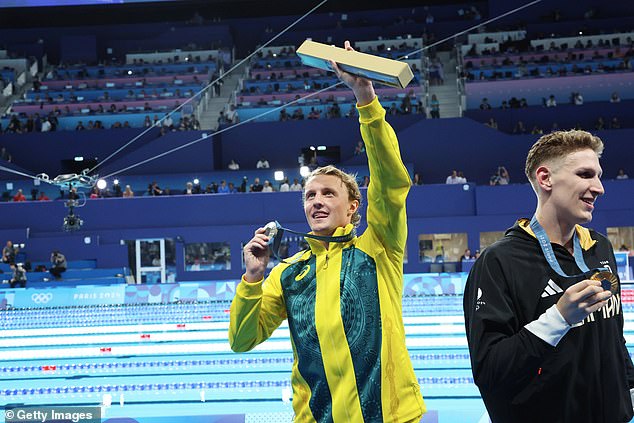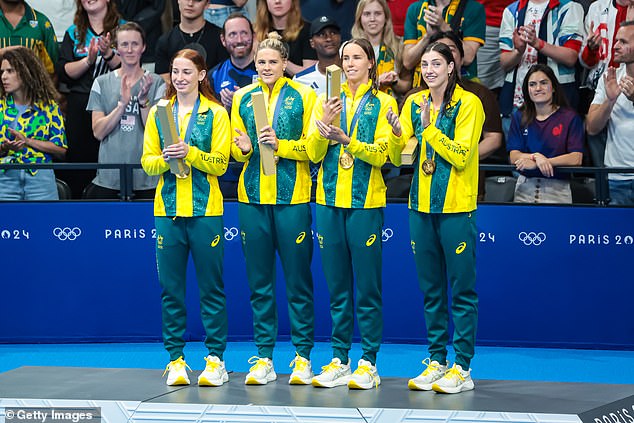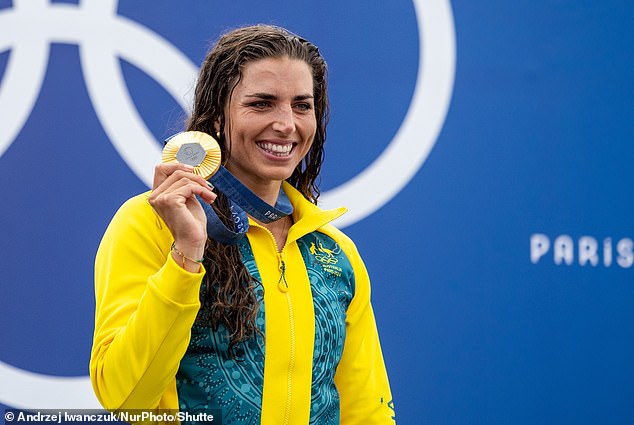Australia’s Olympians are vying for eternal glory in Paris, but there’s also a prize on offer for those who secure a place on the podium.
The Australian Olympic Committee normally covers athletes’ attendance costs, such as flights, accommodation and food, but does not provide them with a salary.
However, the AOC does have a Medal Incentive Funding (MIF) scheme which is “designed to incentivise top athletes to remain in their sport and represent Australia at future Olympic Games,” according to the committee’s website.
If an Australian athlete wins gold, he or she will receive $20,000, for silver, $15,000, and for bronze, $10,000.
This pales in comparison to countries like Singapore, which reportedly pays its gold medalists the equivalent of more than $1.1 million: $561,880 for a silver medalist and $281,903 for a bronze medalist.
It’s also tempting to think that someone like Emma McKeon, Australia’s most decorated Olympian, who has 12 Olympic medals to her name (six gold, two silver and four bronze), would have earned $190,000 for her efforts over the years.
But unfortunately this is not the case.
Australian flag bearer Jessica Fox (pictured), who won gold in the women’s kayak singles final, will receive $20,000 from the Australian Olympic Committee for her victory.
“An athlete can only receive one payment, his best result,” the AOC website states.
‘In other words, multiple golds throughout the year do not qualify for another gold payment and a silver and bronze achievement only qualify for one silver payment, with the “silver” achievement being the highest.’
This means McKeon would have received only $60,000 through the MIF program for his performances in London, Tokyo and Paris.
Athletes competing in team events are paid individually.
“In the case of team sports, the incentive payment is made based on the number of athletes that the sport can nominate under the Olympic Qualification System,” the AOC website explains.
‘For example, in men’s basketball the team size is 12, so a payment of $120,000 is made at $10,000 per team member for their bronze achievement.’
Of course, the MIF program isn’t the only way athletes can make money.

Elijah Winnington, who won a silver medal in the men’s 400m freestyle, will receive $15,000 from the AOC unless he wins gold in another event.

Athletes competing in team events are paid individually, with the gold medal-winning Australian team in the women’s 4x100m final receiving $20,000 each (pictured: Mollie O’Callaghan, Shayna Jack, Emma McKeon and Meg Harris)
They may receive funding through grants, sponsorship agreements and philanthropic investments.
For example, Australia’s richest person, Gina Rinehart, is the largest individual sponsor of Australian Olympic athletes.
Through her company Hancock Prospecting, Ms. Rinehart invests approximately $10 million a year in support of swimming, rowing and volleyball athletes.
Ms Rinehart will also be giving away a specially made pair of Rossie boots to Australian winners who enter the draw. She bought the footwear company late last year.
Australian athletics stars will also have the chance to earn money from their world federation.
World Athletics recently announced a prize pool of $3.6 million, which will be used to award $76,000 to each of the gold medallists in the 48 athletics disciplines.
“While it is impossible to put a commercial value on winning an Olympic medal, or the commitment and focus it takes to represent your country at the Olympic Games, I believe it is important that we start somewhere and ensure that some of the revenue generated by our athletes at the Olympic Games is returned directly to those who make the Games the global spectacle that they are,” said World Athletics President Sebastian Coe.

